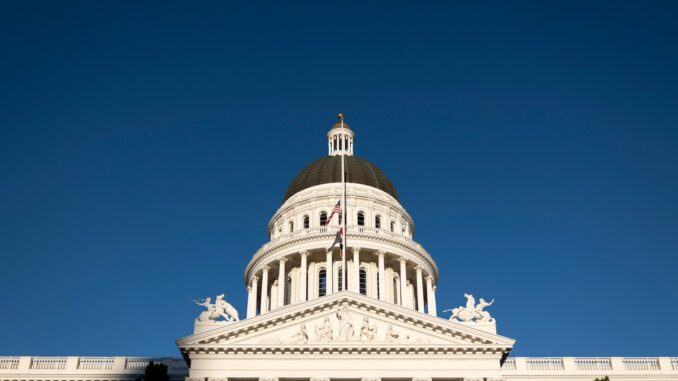
Seventeen months ago, while unveiling a much-revised 2022-23 state budget, Gov. Gavin Newsom bragged of having a $97.5 billion surplus to expand health care, social equity and educational programs.
“No other state in American history has ever experienced a surplus as large as this,” Newsom said as he unveiled a $300-plus billion budget that the Legislature eagerly adopted with a few tweaks.
The core of the eye-popping surplus was a projected $54.8 billion increase in revenues, mostly personal income taxes, over what Newsom had estimated just five months earlier.
With the economic effects of the COVID-19 pandemic fading, the state was reaping a bumper crop of taxes and Newsom’s revised budget assumed that it would continue for at least another year. However, within weeks of the budget’s adoption in June 2022, revenues started to fall below Newsom’s rosy assumptions and he was vetoing spending bills that the Legislature had passed in reaction.
A year after his surplus boasting, Newsom presented a 2023-24 budget that dealt with a projected $31.5 billion deficit. Since its passage in June, revenues have continued to fall below estimates, which means a continuing gap between income and outgo.
Budget mavens in the governor’s Department of Finance and the Legislature are now anxiously awaiting revenue totals from this year’s much-delayed income tax filings to see whether the deficit will continue to grow. Personal and corporate income taxes account for more than 75% of the state’s general fund revenues.
What happened? How did a $97.5 surplus morph into a $30-plus billion deficit in a matter of months?
The pandemic saw more than 2 million California jobs disappear overnight as Newsom ordered large portions of the economy to shut down and the rebound was equally dramatic.
Obviously Newsom and his budget advisors made a huge mistake in assuming that a brief surge in taxes would continue to grow.
But the Newsom administration was not the only entity to be fooled. The Legislature’s budget analyst, Gabe Petek, largely confirmed Newsom’s rosy 2022 projections, tabbing revenues from income and sales taxes to hit $214 billion by 2023-24, $21 billion more than the current $193 billion estimate, which may be too high.
A new report from the federal Bureau of Economic Analysis on the effects of massive federal outlays to combat the economic effects of the pandemic provides another clue as to why California’s revenue forecasts were so wrong. State-by-state, the report charts hundreds of billions of dollars that the feds pumped into the economy to support those who were adversely affected by pandemic-related shutdowns.
In 2019, for instance, the state paid out $4.9 billion in unemployment insurance benefits to jobless California workers, but in 2020, thanks to infusions of federal cash, the total jumped to $106.7 billion and in 2021 another $70.2 billion (much of it fraudulently claimed) before reverting to $4.5 billion in 2022.
Overall, unemployment insurance and other “personal transfer receipts” that had surged during the pandemic dropped by $102 billion in 2022.
The sharp increase in federal aid of all kinds pushed Californians’ personal incomes to more than $3 trillion in 2021, but they dropped by about $7 billion in 2022.
Those numbers don’t count many more billions in pandemic relief that the feds showered on private businesses, state and local governments and school districts.
The cascade of money from Washington D.C. played a major role in generating the brief surge in income and income taxes that was mistakenly extrapolated into a longer-term expansion. It also, incidentally, was a significant factor in the living cost inflation that followed.
What’s done is done but it also should be an object lesson about the pitfalls of revenue forecasting.



Be the first to comment